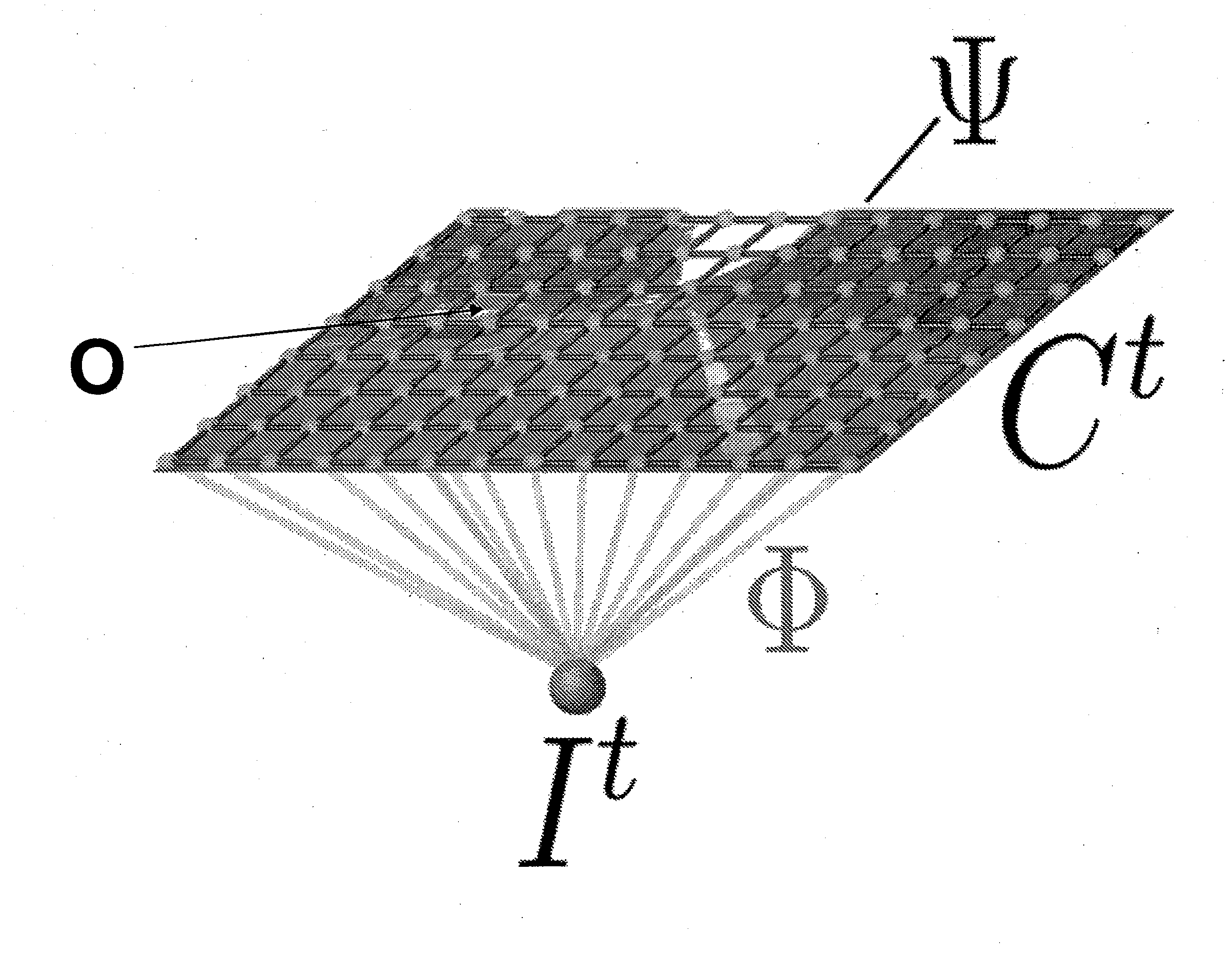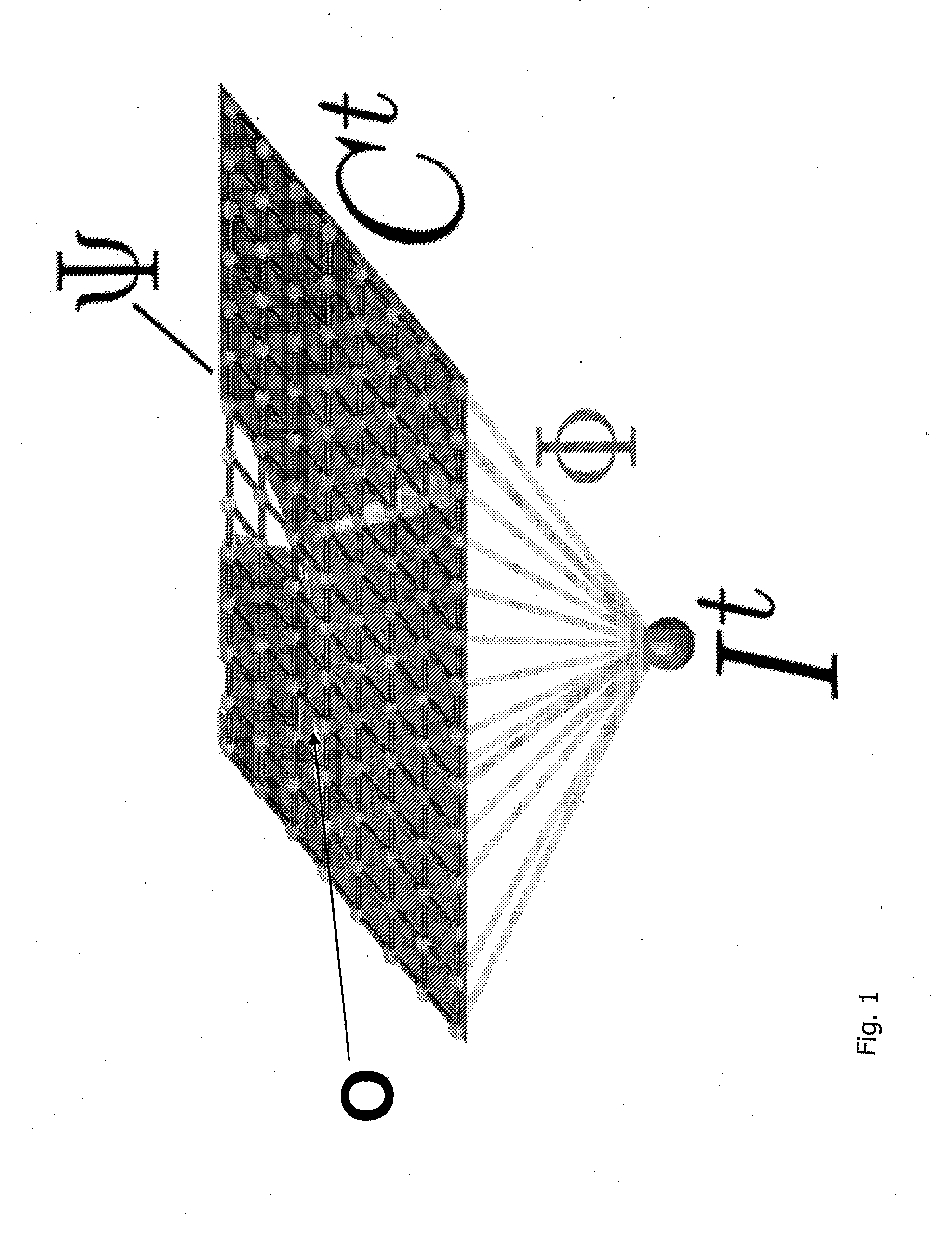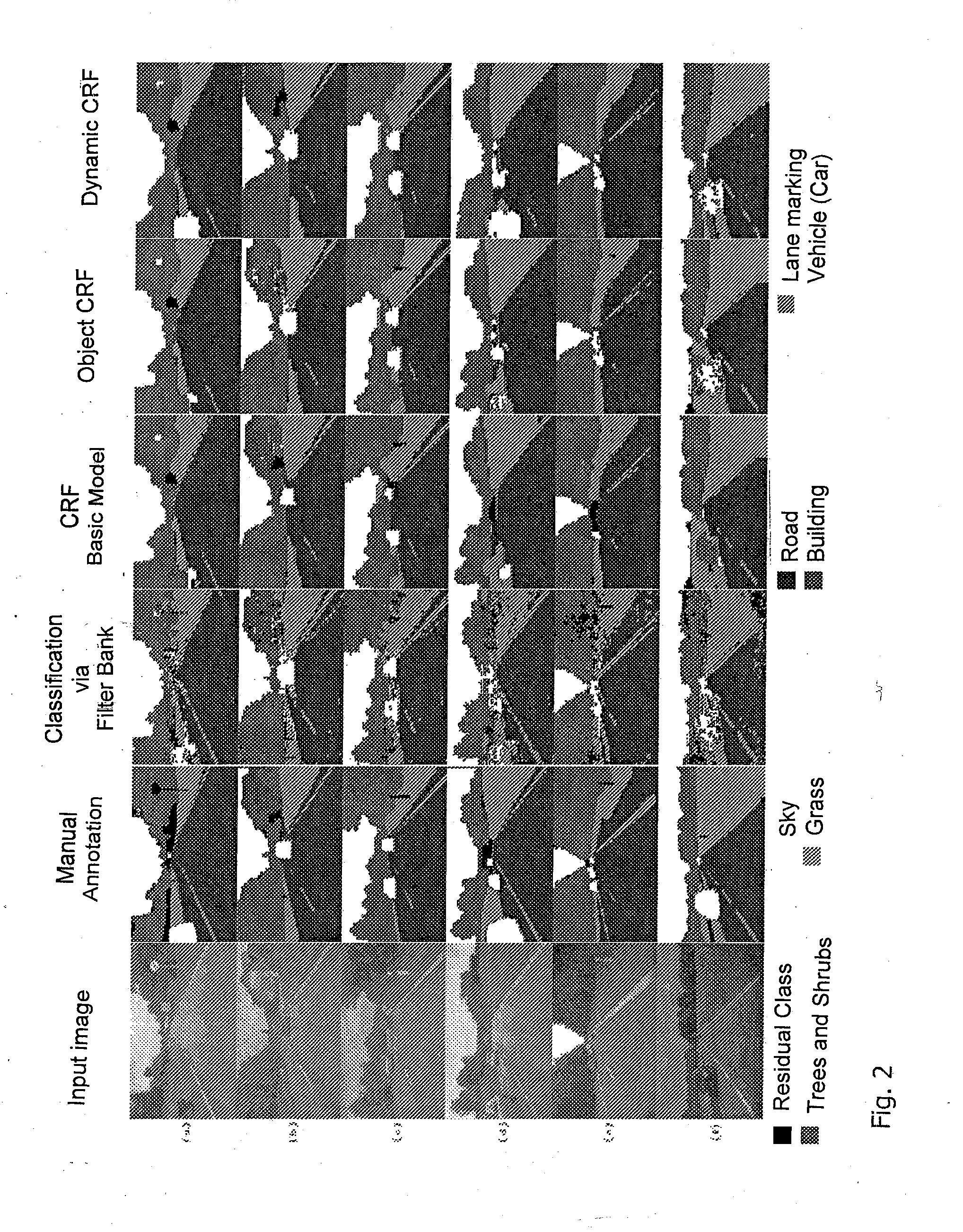Method and device for analyzing surrounding objects and/or surrounding scenes, such as for object and scene class segmenting
a technology for analyzing objects and scenes, applied in image analysis, instruments, computing, etc., can solve problems such as complex inference, use of object detectors for entire objects, and problems such as the problem of forenamed object classes,
- Summary
- Abstract
- Description
- Claims
- Application Information
AI Technical Summary
Benefits of technology
Problems solved by technology
Method used
Image
Examples
Embodiment Construction
[0042]In the description below, the same elements and / or those with the same function can be assigned the same reference numerals. The absolute values and dimensions given below are only sample values and do not indicate a restriction of the invention to dimensions of this type.
[0043]FIG. 1 shows a basic CRF model. By contrast, FIGS. 3 and 4 show a CRF model with an additional object node otn. This node has been added to the standard CRF model: X represents the input image, Ω the input data or object potential, Y a variable for classes e.g. road, marking, building, vegetation, sky etc., otn represents objects O to be detected e.g. car, lorry etc.
[0044]The additional nodes collect information on the appearance of objects from a highly spatial model and from their environment. This contains all subordinate nodes, which support the object hypothesis of the y layer.
[0045]The inserted nodes have several states, wherein the number of states is determined by the number of detected object c...
PUM
 Login to View More
Login to View More Abstract
Description
Claims
Application Information
 Login to View More
Login to View More - R&D
- Intellectual Property
- Life Sciences
- Materials
- Tech Scout
- Unparalleled Data Quality
- Higher Quality Content
- 60% Fewer Hallucinations
Browse by: Latest US Patents, China's latest patents, Technical Efficacy Thesaurus, Application Domain, Technology Topic, Popular Technical Reports.
© 2025 PatSnap. All rights reserved.Legal|Privacy policy|Modern Slavery Act Transparency Statement|Sitemap|About US| Contact US: help@patsnap.com



